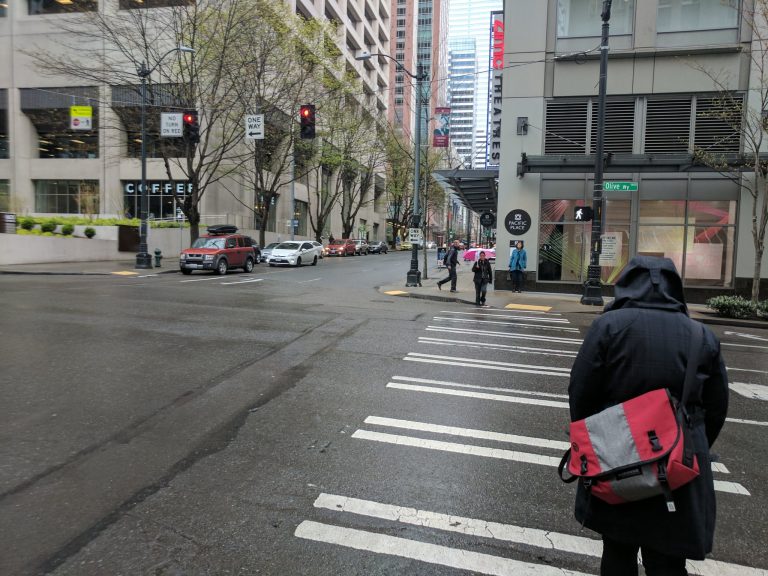Published on February 8, 2022

Seattle’s pedestrian fatality rate was 150% higher in the five years after the launch of Vision Zero compared to the five years before, a KUOW analysis of SDOT data found.
Yet — cars have been hitting pedestrians less often. That means that a growing proportion of collisions are leading to death. That proportion was higher in 2019 than it had been in a decade, then it rose again in 2020, and yet again in 2021, KUOW’s analysis found.
To explain the rise in fatalities, we want to look at factors which make crashes more severe, said Steve Mooney, an epidemiologist at the University of Washington.
Several factors were especially common in Seattle’s fatal collisions between 2010 and 2021, compared to those which were not fatal, according to data from the state’s Department of Transportation.
Two factors were especially significant: larger vehicles and faster driving. Both are increasingly common on Seattle’s roads.
Larger vehicles impact pedestrians with more force, and are more likely to hit one’s chest versus their legs or pelvis, leading to more serious injury.
Passenger vehicles of all styles are getting bigger over time, according to a 2021 Environmental Protection Agency report. Moreover, larger models are becoming more popular, according to the Bureau of Transportation Statistics.
Buses and trucks are increasingly common on Seattle’s roads as well, according to SDOT reports.
Mooney, the epidemiologist, said we shouldn’t overlook any factors which increase risk to pedestrians. Looking at trends over time is inherently nuanced when it comes to complex systems, he added. Individual risk factors can ebb and flow, and interact with each other.
Additionally, when it comes to public health, “understanding the reason for the trend is sort of one piece of the puzzle,” Mooney said. “It doesn’t change the fact that there’s a problem that we need to fix right now.”
Continue reading at KUOW.
Originally written by Gracie Todd for KUOW.